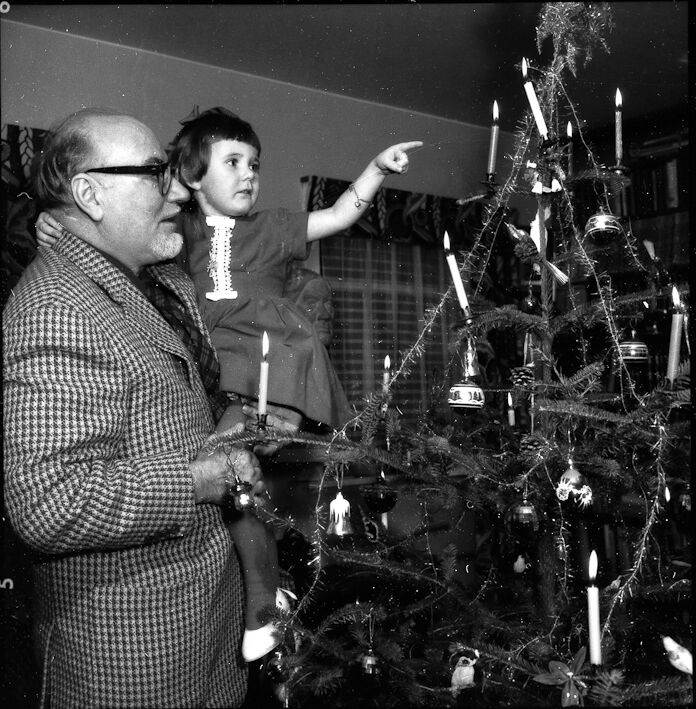Christmas Trees
Christmas trees are an important part of Christmas in our day and generally they are given a central place in people´s living rooms. A great part of the Christmas celebrations take place around the Christmas tree. The Christmas gifts are usually kept under the tree and it is around the tree that families gather to open their presents.
At Christmas dances the Christmas tree is placed in the middle of the room and the children and others present dance around it. During Advent, Christmas trees are first put up in public places: shops and workplaces. These trees are often outdoors and are generally decorated with colourful lights and sometimes other ornaments. Every year since 1952 a large and beautiful tree has been put up on Austurvöllur square in Reykjavík. This tree is a gift to the people of Reykjavík from the people of the Norwegian capital Oslo. It is a festive moment when the lights on the tree at Austurvöllur square are lit in early December and an occasion for the people of Reykjavík to gather and enjoy the lights and the Christmas spirit. Even though decorated Christmas trees are seen in public already at the outset of Advent it is usually not until a few days before Christmas that people decorate the tree at home. It is most common for people to decorate their tree on St Thorlákur´s Day, the day before Christmas Eve, when the Christmas preparations are at their peak. In that way the decorating of the tree marks the beginning of the festive spirit associated with Christmas as it mostly is the final touch to the preparations in the home to turn on the Christmas tree lights. When the lights have been turned on Christmas can come!
As the Christmas trees play such an important role in modern day Christmas celebrations it may seem odd that they, as is the case with a lot of other Christmas ornaments, are a relatively recent tradition in this country and elsewhere. It is known, however, that the ancient Romans decorated their homes with evergreen branches during the height of winter but the first records of Christmas trees as such are from Germany in the latter part of the 16th Century. It is considered most likely that this custom came in the wake of the Reformation as it was no longer considered proper to use Catholic Christmas traditions such as putting up a Bethlehem manger or a Christmas manger. The Christmas tree was thus originally a Protestant tradition but at the outset only the well-off put up Christmas trees - which often had real candles on the branches. It was not until the 19th Century that Christmas trees became common among the general public in Europe and it is around that time that they are first seen in the Nordic Countries. Around the middle of the 19th Century the first Christmas trees are seen in Iceland and then mostly among Danish shopkeepers and Icelandic officials who had been familiarised with them in Copenhagen. At first, the Icelandic Christmas trees were made at home as no evergreens grew wild in Iceland. These homemade trees were often made from a pole and sticks and were sometimes painted green or red. Candles were often put on the branches and they were decorated in some way, for example with heather if no other ornaments were available. It wasn´t until the middle of the 20th Century that live evergreens became commonplace in this country. At first they were imported and it was not for everyone to purchase such a tree and therefore the home made trees were still used by many people well into the 20th Century. Around 1970 Icelandic evergreens came on the market and now most people choose to have a live Christmas tree decorated with lights and ornaments in their home and for many the fragrance the trees emit is an important part of the Christmas spirit. Others make do with artificial trees - which by the way look more and more real and can be quite beautiful - and by doing that avoid the hassle of sweeping or vacuuming the pine needles that inevitable fall off the live trees.
